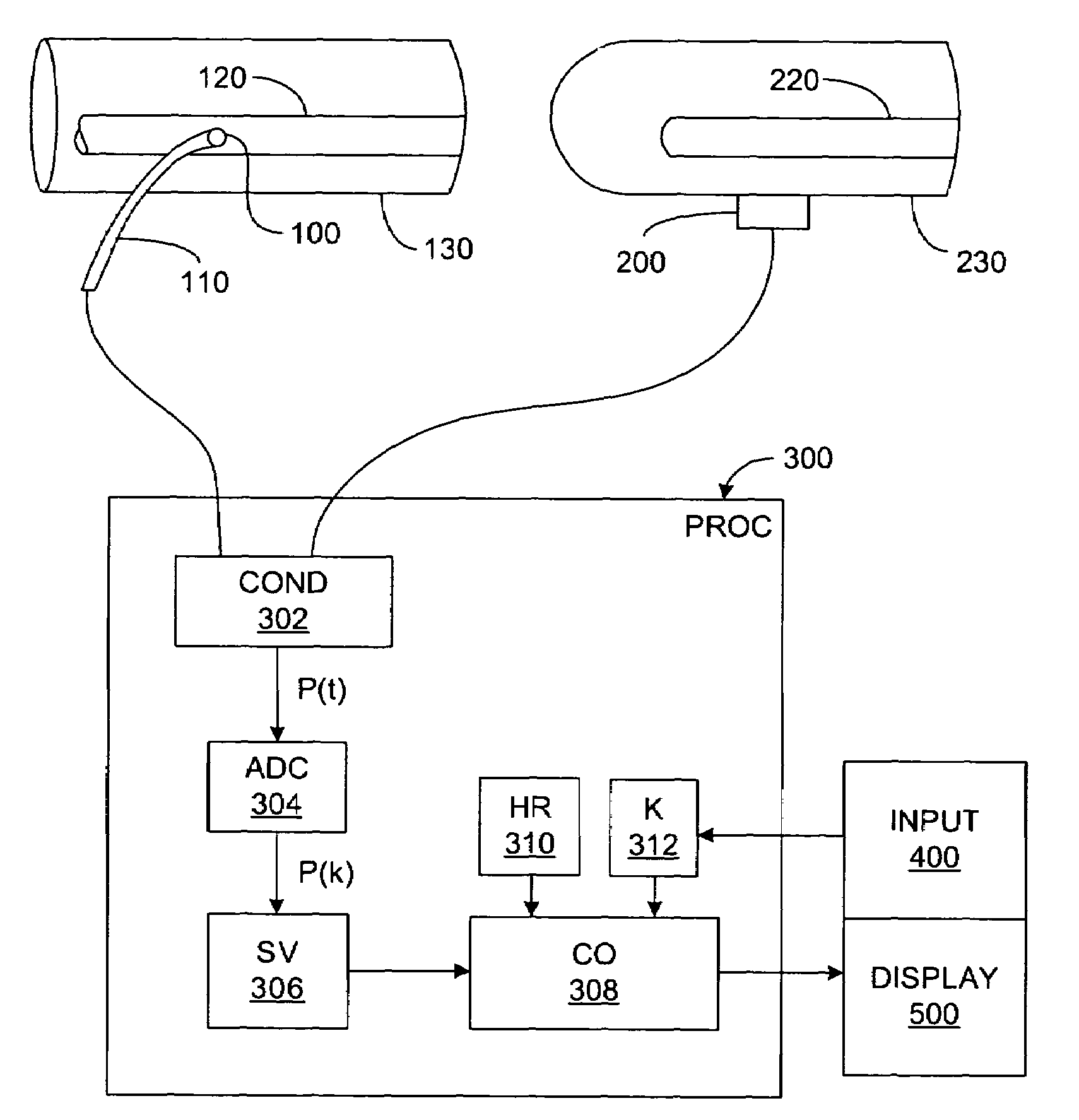Pressure-based system and method for determining cardiac stroke volume
a pressure-based system and volume technology, applied in the field of pressure-based system and volume determination of cardiac stroke, can solve the problems of invasiveness or non-invasiveness of the input signal sensor used to sense the input signal
- Summary
- Abstract
- Description
- Claims
- Application Information
AI Technical Summary
Benefits of technology
Problems solved by technology
Method used
Image
Examples
Embodiment Construction
Introduction
[0028]In broadest terms, the invention involves the determination of a cardiac value such as stroke volume (SV), and / or a value derived from SV such as cardiac output (CO), using information extracted from an arterial pressure waveform, or from a waveform that is proportional to arterial pressure, which may be measured with an invasive, non-invasive, or “minimally invasive” instrument or combination of instruments. The organization of this description is: First, the theoretical basis of the invention is discussed. This is followed by an explanation of the main steps of a method to use the theory, then a description of a system that implements the method.
[0029]The invention may be used to advantage with any type of subject, whether human or animal. Because it is anticipated that the most common use of the invention will be on humans in a diagnostic setting, the invention is described below primarily in use with a “patient.” This is by way of example only, however—it is in...
PUM
 Login to View More
Login to View More Abstract
Description
Claims
Application Information
 Login to View More
Login to View More - R&D
- Intellectual Property
- Life Sciences
- Materials
- Tech Scout
- Unparalleled Data Quality
- Higher Quality Content
- 60% Fewer Hallucinations
Browse by: Latest US Patents, China's latest patents, Technical Efficacy Thesaurus, Application Domain, Technology Topic, Popular Technical Reports.
© 2025 PatSnap. All rights reserved.Legal|Privacy policy|Modern Slavery Act Transparency Statement|Sitemap|About US| Contact US: help@patsnap.com



